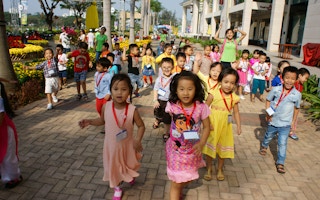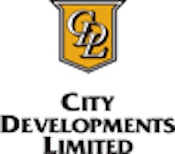From air-conditioning systems that provide comfort to motion-sensing LED lights that save energy, green building technologies are being used by cities all over the world to keep urban life humming.
But even while building owners and operators focus on the energy performance of buildings, human health and well-being must also be a priority, said speakers at the closing plenary of the International Green Building Conference (IGBC) on Thursday.
“As cities are for people… we should work on making a quantifiable connection between indoor air quality and human health,” said global expert on IEQ, Professor William Bahnfleth, who is director of the Indoor Environment Center, department of Architectural Engineering at the Pennsylvania State University.
Some of the research that has been done on the link between IEQ and health show that better air quality leads to higher productivity, fewer sick days by employees, and lower healthcare costs, Bahnfleth added.
“We need to look at the things we know and put them to work today,” he noted.”Buildings are for people, not for saving energy, let’s all remember that. I think if we do that (improve indoor environmental quality), we will be heading in the right direction.”
Singapore is also making a conscious effort to include the human well-being aspect of green buildings in its policies.
Its Building and Construction Authority (BCA) on Wednesday launched an updated version of its flagship Green Mark building certification scheme to address sustainability in a more holistic manner.
“
With all these technologies, will people be more comfortable, do they help people live better?
Toh Chai Keong, assistant CEO, (engineering and technology) of Infocomm Development Authority
Called Green Mark 2015, the new standards for commercial buildings include a stronger emphasis on indoor environmental quality in relation to enhanced health and well-being.
Some of these criteria include occupant comfort, quality of indoor air, lighting, acoustics, BCA said.
“We spend most of our time in buildings and I think I’m glad to say that we are making certain headway in increasing the emphasis on indoor environmental quality,” said Ang Kian Seng, group director of technology development group at BCA.
“Now that we’ve made some progress in green buildings over the past decade, we have to think about what we want to achieve over the next decade: to ensure that our green buildings are smart, sustainable and livable.”
Indeed, while new-fangled technology and smart applications seem to dominate the current conversation around green technology, the softer aspects of urban living must not be neglected, said the panellists.
Kevin Hydes, president and chief executive officer of green engineering company Integral Group, cited Singapore’s Gardens by the Bay, one of the most scientifically advanced and greenest parks in the city, as “social infrastructure” that city residents should tap on.
The 250-acre garden in the city’s new downtown area is known for having so-called Supertrees that are embedded with environmentally sustainable functions like photovoltaic cells to harvest solar energy. These trees also act as air venting ducts for nearby greenhouses and collect rainwater.
Hydes suggested that people “go for a walk one day at week” at the Gardens by the Bay to enjoy the benefits. “Collectively, Singapore has paid for (the park). It’s an investment in social infrastructure and you need to tap into that,” he said.
Hydes added that there has to be a balance between the need to be “connected all the time” and enjoying the green buildings that the city has built.
In Singapore, this awareness to retain a connection to the nautral surroundings even while the city pushes ahead to become the world’s leading smart nation is also increasingly a part of the national conversation.
Singapore’s Prime Minister Lee Hsien Loong last November laid out a plan for the country to become a smart city, and in doing so, “become one of the top countries in terms of quality of life, vibrancy, and opportunities for our people”.
There is therefore a need to keep people at the center of all the technology and connectivity, said Professor Toh Chai Keong, assistant chief executive (engineering and technology) of Infocomm Development Authority of Singapore, who also spoke at the event.
“With all these technologies, will people be more comfortable, do they help people live better?,” he asked the audience.
“So in our drive (to be a smart city), liveability and quality of life is very important. Technologies are things, but how you live every day is the priority,” he adds.
Eco-Business is producing a special e-newsletter featuring stories on the proceedings at IGBC 2015, kindly supported by City Developments Ltd and the Building and Construction Authority. Sign up to receive the newsletter here.






















